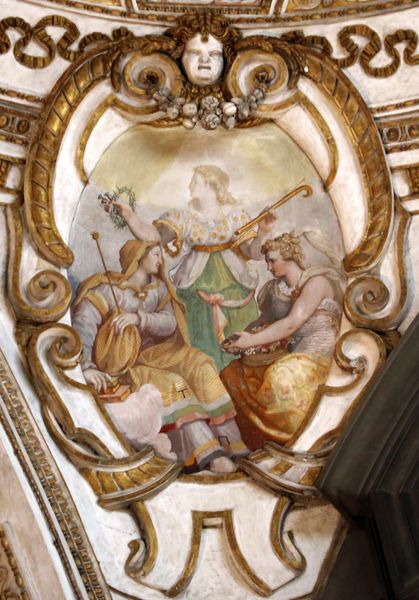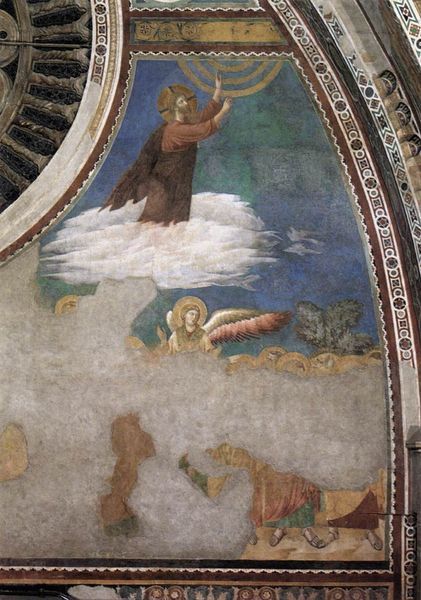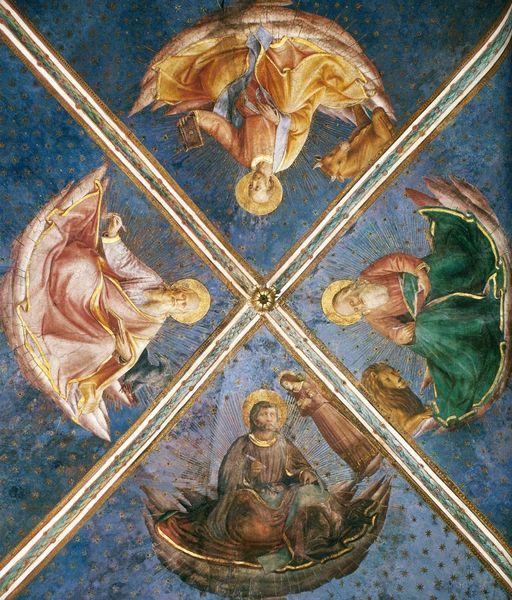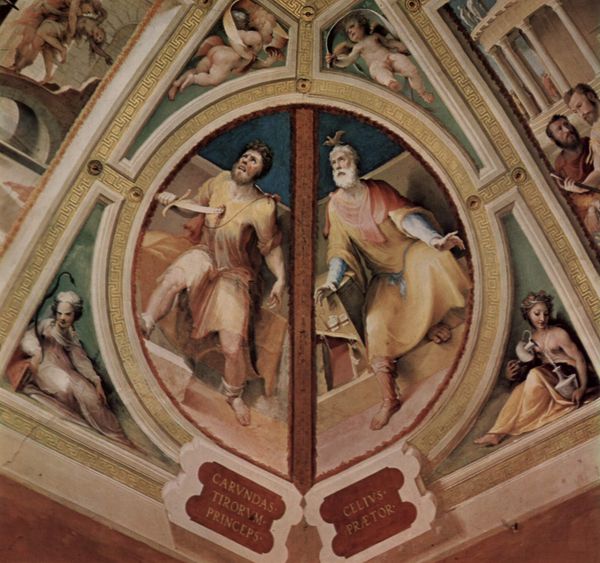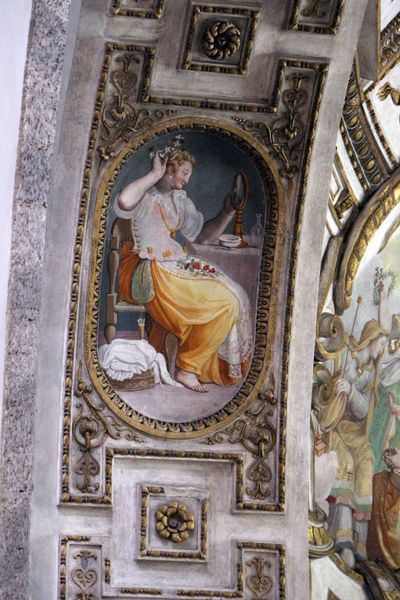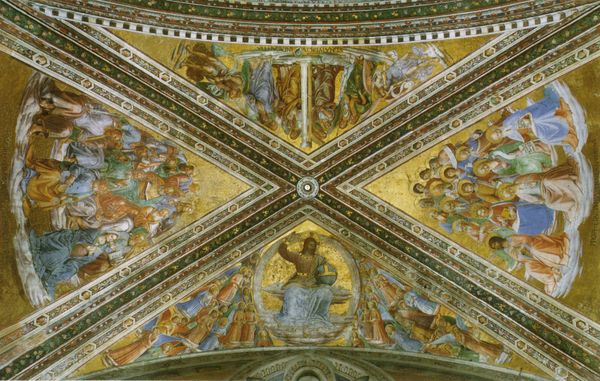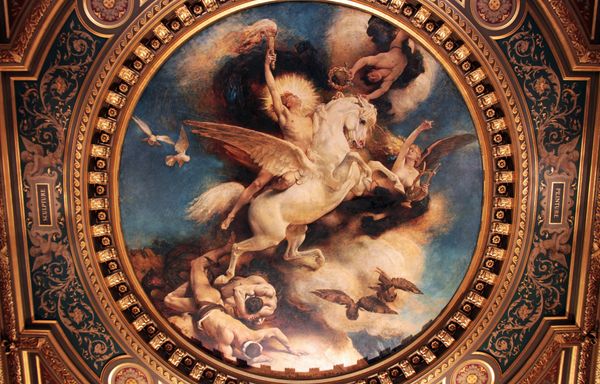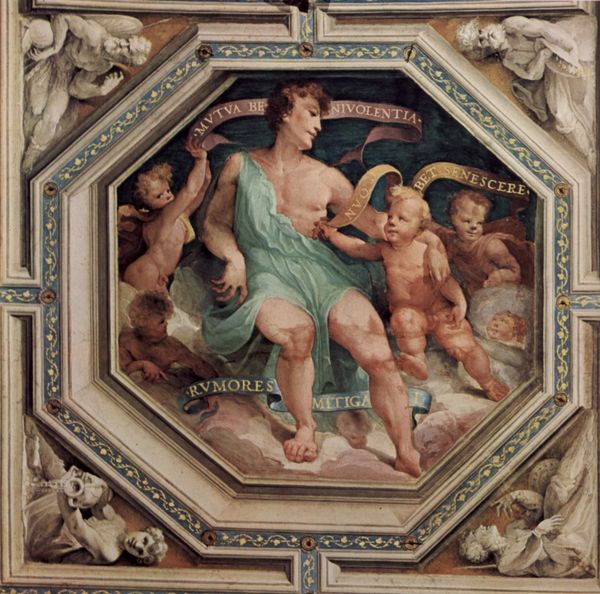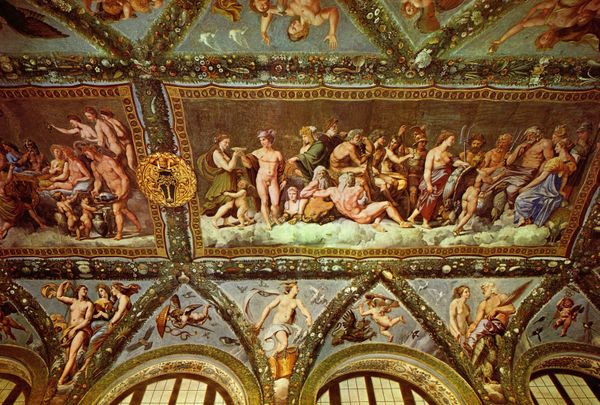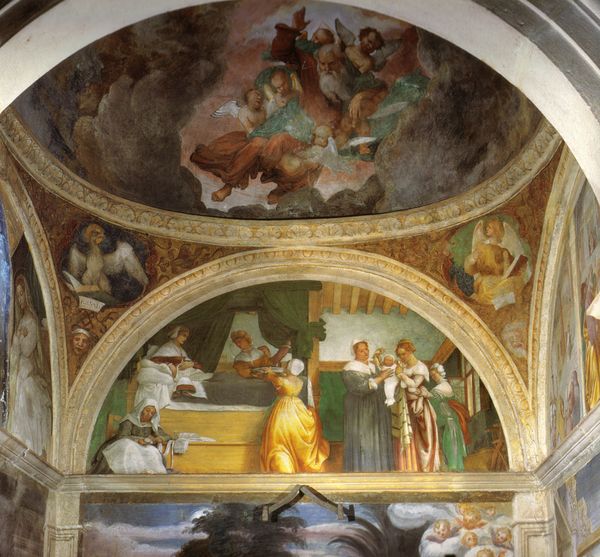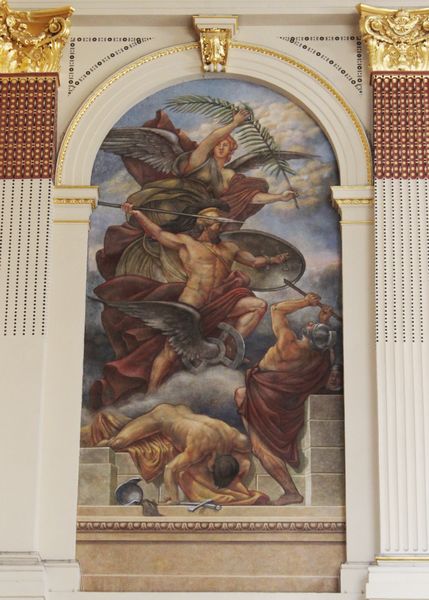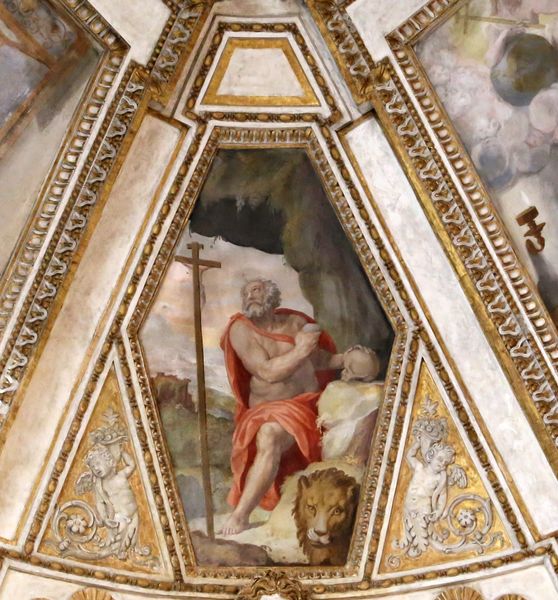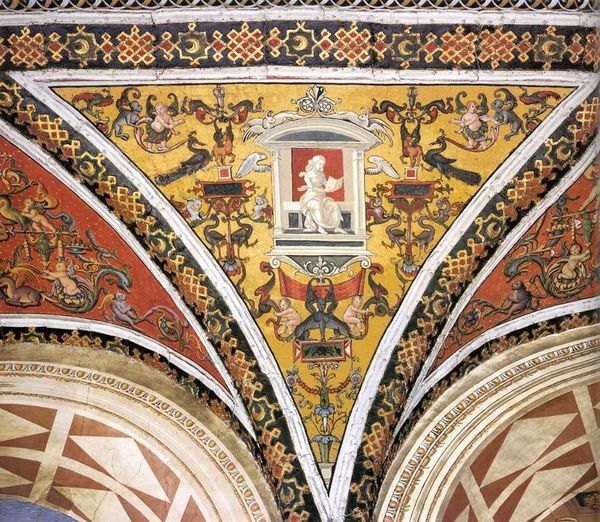
painting, oil-paint, fresco
#
narrative-art
#
painting
#
oil-paint
#
fresco
#
oil painting
#
roman-mythology
#
underpainting
#
romanticism
#
painterly
#
mythology
#
painting painterly
#
history-painting
Dimensions: 221 x 292 cm
Copyright: Public domain
Editor: This is "Hesiod and the Muse" by Eugène Delacroix, an oil painting and fresco located in the Palais Bourbon in Paris. It strikes me as such a dreamy and dramatic scene! What's your take on it? Curator: What interests me here is how Delacroix uses a classical subject, Hesiod receiving inspiration from a muse, to legitimize a Romantic vision of art. He places it directly within the Palais Bourbon, a space of political power. What does it mean to put the artist as visionary alongside political leaders? Is he saying the artist and politician should both aspire to higher ideals, or something else? Editor: So, you're saying its placement is as important as the subject itself? Curator: Absolutely. Consider the broader historical context. The Palais Bourbon was built and rebuilt over decades, mirroring France's turbulent political changes. Delacroix's fresco becomes part of that architectural narrative. Also, note the revival of interest in classical mythology during the 19th century and how it intertwined with ideas about national identity and cultural authority. Editor: It’s like Delacroix is arguing for art's crucial role in society's overall direction? Curator: Precisely. He isn’t merely illustrating a myth; he's making a claim about the artist's role in shaping national consciousness. It’s less about simple beauty and more about the *politics* of imagery. Editor: I never considered how politically charged it could be! Now I see it less as a historical scene and more as a bold statement about art's significance in French society. Curator: Right, thinking about context transforms what we see!
Comments
No comments
Be the first to comment and join the conversation on the ultimate creative platform.
